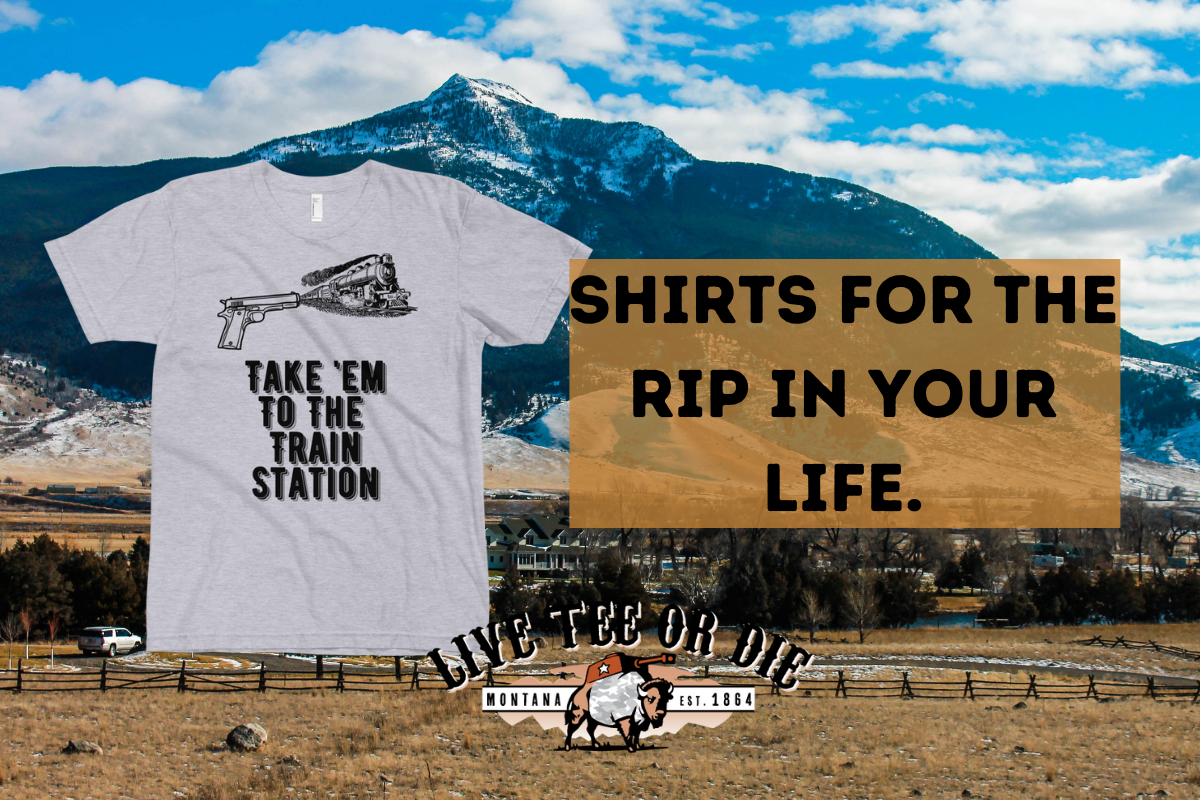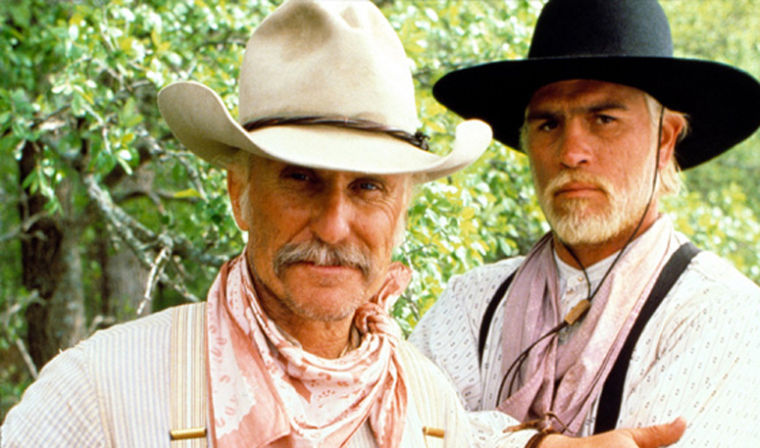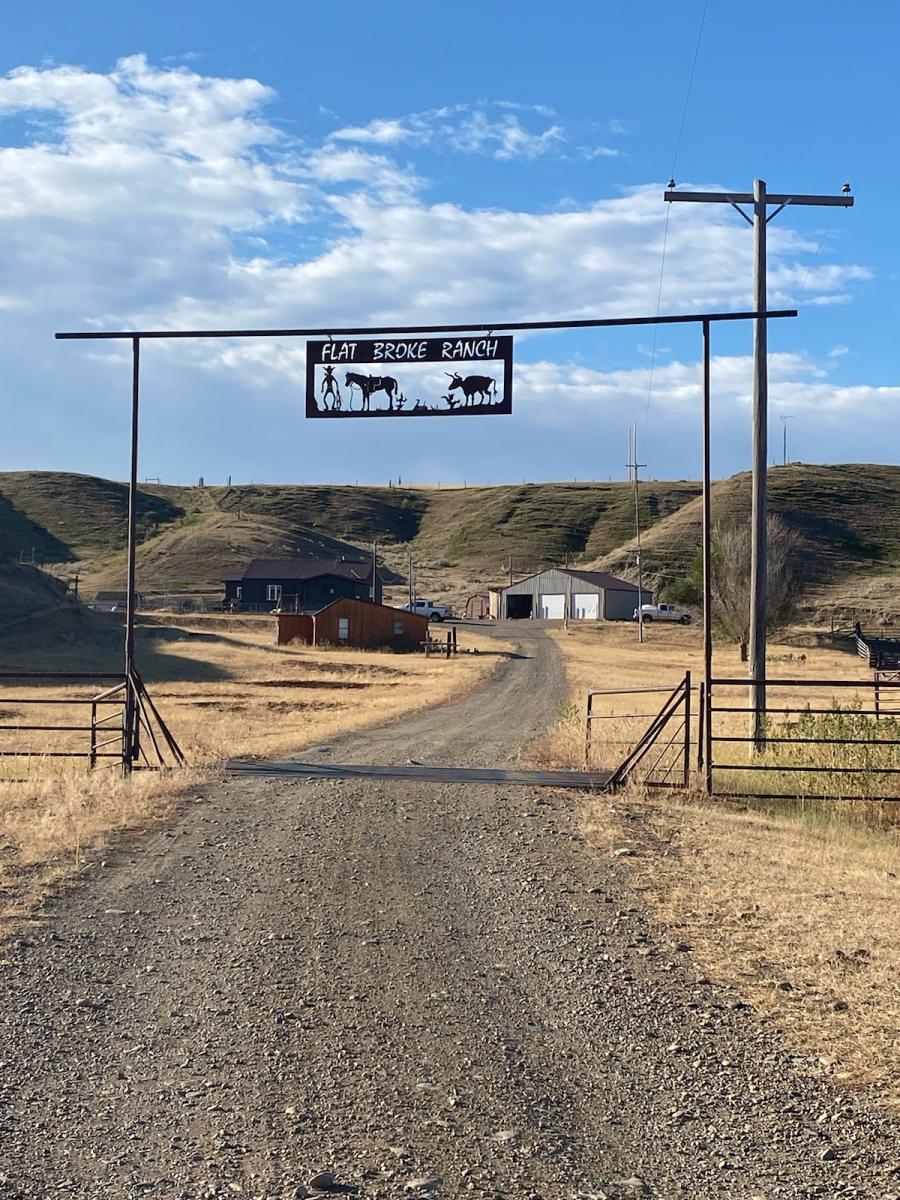An Old, Broke Montana Rancher's Thoughts On "Yellowstone"


"Yellowstone" image courtesy of Paramount
Howdy. My name is Gary Shelton, and I’m a rancher.
I grew up in Montana and have always enjoyed Westerns, even though it seems like they don’t make as many good ones as they used to do. I like the vistas and the freedom they represent. As a true blue Montanan, I also enjoy horses, cattle, and all creatures that make their home on the range. And I don’t mind a little shootout or brawl now and then.
I’m old enough to remember the golden age of TV Westerns, when shows like The Rifleman, Have Gun, Will Travel, and Gunsmoke filled the few channels we did get. Hell, I’m old enough to remember getting our first television, an enormous humming Philco that made an awful wheezing racket in its tubes when you turned it on. After settling itself down, it would warm up sufficiently to do its best impression of a snowstorm. Then the rabbit ears on top of the television would somehow gather up, seemingly out of the very aether, the magic, invisible signals that, if rearranged in a certain way, produced Wagon Train.

I’d sit about two feet from that great big monster, staring in wonder at a muddy, black and white image that I believe we would call “low resolution” today. But I didn’t care. I cared that Marshall Matt Dillon kept the town safe—especially Miss Kitty, whom I found to be an enchanting creature, if a little too old for me.
As a man in my late twenties, I also appreciated the 1978 miniseries Centennial, a sprawling epic that began with mountain men charting an unexplored West in the early nineteenth century and ended with a group of bell-bottomed urbanites dealing with urban planning. I guess you can figure which end of the series I preferred.
If it sounds like all I did was watch TV, you’re wrong. I also slept and ate.

In all seriousness, there was very little time for television, as work around the ranch, school, and my own designs to stay as far away from home as possible during the sunlit hours kept me away from my beloved boob tube. But the few hours a week that I did spend in front of that elephantine box of tubes were largely spent looking at Westerns because, well, they’re the best.
And for many of us who grew up in the American West, they’re also a way of seeing our own dreams brought to shadowy life before our very eyes—what boy or girl who grows up in Montana, whether in the mountainous western part or the flat, prairies of the east, doesn’t want, at least a little, to be a cowboy or a cowgirl?

Then came Lonesome Dove, which some critics credit with bringing the Western back for an audience for whom they had grown old, creaky, and passé. But Gus and Call (played expertly and singularly by Robert Duvall and Tommy Lee Jones, respectively), and their mythic saga of driving cattle from the mesquite Hell of Texas up to the lush green Heaven of Montana sure rekindled my love for a good Western. Matter of fact, I’ve always sort of considered myself a Gus type—reliable in a pinch, good at talking, a real raconteur!
So when Paramount came out with Yellowstone, with frequent movie cowboy Kevin Costner, I was excited. And now, since Yellowstone is one of the most-watched shows on TV, I reckon it’s not just me and mine who still like a good Western.
In short, my DVR (no modern cowboy should be without a DVR) is set never to miss an episode. It’s action-packed, well-directed, top-notch Montana (well, sometimes Utah) scenery, some of the best horsemanship and horse-flesh you’ll ever see, and a dash of romance for the little lady. It’s so good and full of action that you can miss something vital if you go to the fridge for a beer. So I have to either rewind the DVR, so I don’t miss a second, or line up the beers I’ll need next to me before it even commences.
Now that we’ve gotten all the way through season three and nearly wrapped up filming on season four, I’m delighted to hear they’ve already approved a season five and six. It’s not like there are no more stories to tell; they could make another decade’s worth of melodramatic takes on topics like low cattle prices, tight margins, droughts, grasshoppers, predators, and poachers. And if they ever do run out of ideas, I’m available to consult for a modest fee.

The Dutton family has already dealt with all sorts of big problems typical of a big ranch: cattle rustlers, brazen biker gangs trespassing on their land, and developers of all types, including a nearby Native American tribe trying to buy the area they understandably claim as rightfully theirs since time immemorial. As season three neared its end, the Dutton family faced the worst possible foe yet, a company with billions that wanted 50,000 of their acres to build an airport and ski resort complete with million-dollar homes and commercial strips. Hmmm, that doesn’t sound familiar, does it?
In fact, the show’s portrayal of land use and eminent domain may be the only unrealistic thing about the series: if there is a part of Montana that has seen more than its share of subdividing, it is the Paradise Valley. Few large tracts are left. There might be some ranches nearly the size of the Duttons’ in Montana, but they sure as hell aren’t in Paradise Valley.
Montana is a beautiful state, and the Dutton ranch, the Yellowstone, is supposed to be located in the Paradise Valley, arguably one of Montana’s most beautiful locales. However, I think the whole of Montana is just as beautiful, not only the western portions.
From Troy to Alzada, Westby to Monida, Lost Trail Pass to Ekalaka, I have never seen any part of it that I didn’t think was drop-dead gorgeous. I have seen most of it, by the way; in my motorcycle hippy days, I rode every paved road in the state, and most of the gravel and dirt ones as well from the western forests to the Golden Triangle to the Missouri River Breaks. I guess I’m like John Steinbeck, who said, “I am in love with Montana. For other states I have admiration, respect, recognition, even some affection, but with Montana it is love. It’s difficult to analyze love when you’re in it.”

And so in the show, the company with the billions offers $10,000 per acre for the afore-mentioned 50,000 acres. And that sorta makes you think, Couldn’t the Duttons take the $500,000,000 and in the tax-free exchange purchase a ranch that could make some money somewhere else in the state? After all, there are 147,040 square miles in Montana, or 94,105,600 acres.
Having said that, I think about my own slice of paradise in Montana, and after counting the cows and finding them all accounted for, I find myself and my trusty steed at the highest point on my ranch east of Havre and looking to the south at the Bears Paw Mountains. I only have to stand here but a moment to be convinced anew that Montana is easily the most beautiful state in the union.
On a fine day with the high clouds rafting across the sky, this ranch can hold its own for sheer visual beauty with any landscape on earth.
So I can see why the Duttons don’t want to sell; it’s only $500 million, after all.

